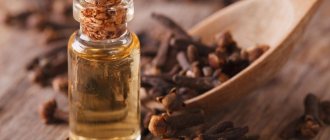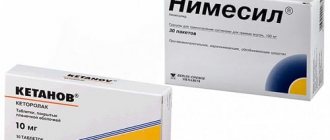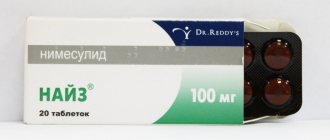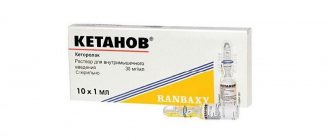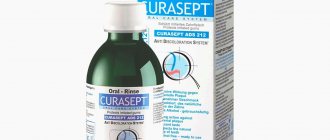Description
A mixture of powder and granules from almost white to light yellow in color with an orange odor. Inhomogeneity of color is allowed.
The finished suspension is white to light yellow in color with an orange odor.
Pharmacotherapeutic group:
non-steroidal anti-inflammatory drug (NSAID).
ATX code:
M01AX17
Pharmacological properties
Pharmacodynamics:
Nimesulide is a non-steroidal anti-inflammatory drug from the sulfonamide class. Has anti-inflammatory, analgesic and antipyretic effects. Unlike non-selective NSAIDs, nimesulide mainly inhibits cyclooxygenase-2 (COX-2), inhibits the synthesis of prostaglandins at the site of inflammation; has a less pronounced inhibitory effect on cyclooxygenase-1 (COX-1).
Pharmacokinetics:
Suction
Nimesulide is well absorbed from the gastrointestinal tract (GIT).
The maximum concentration in blood plasma (Cmax) after oral administration of a single dose of nimesulide (100 mg) is achieved on average after 2-3 hours and is 3-4 mg/l.
Distribution
Communication with blood plasma proteins up to 97.5%.
Penetrates into the tissues of the female genital organs, where after a single dose its concentration is about 40% of the concentration in plasma. Penetrates well into the acidic environment of the inflammation site (40%) and synovial fluid (43%). Easily penetrates histohematic barriers.
Metabolism
Nimesulide is actively metabolized in the liver using the cytochrome P450 (CYP)2C9 isoenzyme. There is a possibility of drug interaction with nimesulide when used simultaneously with drugs metabolized by the CYP2C9 isoenzyme. The main metabolite is the pharmacologically active parahydroxy derivative of nimesulide - hydroxynimesulide, found in blood plasma mainly in conjugated form, in the form of glucuronate.
Removal
The half-life (T1/2) of nimesulide is about 1.56-4.95 hours, hydroxynimesulide - 2.89-4.78 hours. Nimesulide is excreted from the body mainly by the kidneys (about 50% of the dose taken). Hydroxynimesulide is excreted by the kidneys (65%) and bile (35%) and undergoes enterohepatic recirculation.
Use in elderly patients
The
pharmacokinetic profile of nimesulide in elderly patients does not change when using single and multiple/repeated doses.
Use in patients with kidney disease
In a short-term study conducted in patients with mild to moderate renal failure (creatinine clearance 30-60 ml/min), Cmax of nimesulide and its main metabolite were no higher than in healthy volunteers.
AUC and T1/2 were 50% higher, but were within the range of AUC and T1/2 values observed in healthy volunteers during the use of nimesulide. Repeated use did not lead to the accumulation of nimesulide.
Composition and mode of action
Nimesulide is a non-steroidal anti-inflammatory drug
The drug is available in tablets and gel form. Each contains 100 mg of the active ingredient – Nimesulide.
The product is also available in powder form, with which a liquid suspension is prepared for oral administration.
The auxiliary components are cellulose, lactose monohydrate, magnesium stearate.
Nimesulide is a non-steroidal anti-inflammatory drug.
The action of the active components is aimed at slowing down the production of prostaglandins - substances that are responsible for the formation of the inflammatory response.
The drug has an effect:
- Anti-inflammatory;
- Analgesic (pain reliever);
- Antipyretic.
The effect after administration is observed quite quickly; on average, it begins to act within 25-30 minutes. The analgesic effect lasts for a fairly long period of time - up to 10 hours.
Indications for use
Therapy for acute pain:
- pain in the lower back and/or lumbar region;
- pain syndrome associated with diseases of the musculoskeletal system, including tendonitis, bursitis;
- pain from bruises, sprains and dislocations of joints;
- toothache;
- symptomatic treatment of osteoarthritis (osteoarthritis) with pain syndrome;
- primary algodismenorrhea. The drug is intended for symptomatic therapy, reducing pain and inflammation at the time of use, and does not affect the progression of the disease. Nimesulide is recommended for therapy as a second-line drug.
Effectiveness for toothache
The medicine can be used for toothache in dentistry
Toothache is not a direct indication for taking Nimesulide.
This drug is used primarily for rheumatic diseases that affect the joints and surrounding tissues.
The action of the medicine is aimed at eliminating the symptoms of inflammation, which include pain.
However, due to the specificity of its effect on pain receptors, Nimesulide is often prescribed for pain syndromes whose origin is not related to rheumatic processes.
In view of this, the medicine can be used for toothache in dentistry.
Important to remember! The effectiveness of Nimesulide depends on the reason for the toothache. In severe dental pathologies, even potent analgesics cannot eliminate the symptom.
Effective against gingivitis
Gum inflammation is one of the most common dental disorders. For therapeutic purposes, patients may be prescribed Nimesulide, but it is taken in combination with other medications.
Taking the described drug is advisable for the purpose of symptomatic therapy, as it eliminates swelling and helps normalize local temperature.
Contraindications
- hypersensitivity to nimesulide or other components of the drug;
- complete or incomplete combination of bronchial asthma, recurrent nasal polyposis, paranasal sinuses and intolerance to acetylsalicylic acid and other NSAIDs (including a history);
- history of hepatotoxic reactions to nimesulide;
- simultaneous use with other drugs with potential hepatotoxicity (for example, other NSAIDs);
- chronic inflammatory bowel diseases (Crohn's disease, ulcerative colitis) in the acute phase;
- period after coronary artery bypass surgery;
- febrile syndrome with colds and acute respiratory viral infections;
- suspicion of acute surgical pathology;
- peptic ulcer of the stomach or duodenum in the acute phase;
- erosive and ulcerative lesions of the gastrointestinal tract in the acute phase;
- history of erosive and ulcerative lesions of the gastrointestinal tract;
- history of perforation or gastrointestinal bleeding, including those associated with previous NSAID therapy;
- history of cerebrovascular bleeding, other active bleeding or diseases accompanied by increased bleeding;
- severe blood clotting disorders;
- severe heart failure;
- severe renal failure (creatinine clearance less than 30 ml/min);
- progressive kidney disease;
- confirmed hyperkalemia;
- liver failure, active liver disease;
- children under 12 years of age;
- pregnancy and breastfeeding;
- alcoholism, drug addiction, sucrase/isomaltase deficiency, fructose intolerance, glucose-galactose malabsorption, since the drug contains sucrose;
Nimesulide, Nimesil, Nimulid - are there any differences?
The drug Nimesil is available exclusively in powder form
The question of whether there is a difference between the presented drugs is very relevant.
In general, these drugs are direct analogues. They have the same active ingredient - Nimesulide.
The differences lie solely in the release form and secondary components.
The drug Nimesil is available exclusively in powder form.
Nimulid can be purchased in gel form, but it is also available in syrup form. This medicine contains a low dose of Nimesulide, which is why it can be prescribed in pediatrics.
Which product should I choose?
To eliminate toothache, it is recommended to use Nimesulide tablets or Nimesil powder. They have the same concentration of the active ingredient - 100 mg.
Nimulid syrup can be given to children under 12 years of age, but in childhood many other painkillers that are safer for the child’s body can be used.
Carefully
- arterial hypertension;
- cardiac ischemia;
- cerebrovascular diseases;
- severe heart failure;
- dyslipidemia/hyperlipidemia;
- diabetes;
- peripheral arterial disease;
- hemorrhagic diathesis;
- smoking;
- renal failure (creatinine clearance 30-60 ml/min);
- anamnestic data on the development of erosive and ulcerative lesions of the gastrointestinal tract, the presence of Helicobacter pylori ;
- elderly age;
- long-term use of non-steroidal anti-inflammatory drugs;
- frequent alcohol consumption, severe somatic diseases, systemic lupus erythematosus (SLE) and other systemic connective tissue diseases;
- concomitant therapy with the following drugs: anticoagulants (for example, warfarin), antiplatelet agents (for example, acetylsalicylic acid, clopidogrel), oral glucocorticosteroids (for example, prednisolone), selective serotonin reuptake inhibitors (for example, citalopram, fluoxetine, paroxetine, sertraline).
Analogs
Analogs include drugs that also have anti-inflammatory and analgesic effects:
| Name | Price | Description |
| Ketanov | From 230 rubles for 10 tablets | It is a non-steroidal anti-inflammatory drug with a pronounced analgesic effect. Effective for toothache, but the effect is short-lived - on average up to 4-5 hours. |
| Nimesil | From 35 rubles for 1 sachet | A drug based on Nimesulide. It is a powder for preparing a suspension. In a short period of time it eliminates pain and reduces body temperature. |
| Nemulex | From 190 rubles for 10 bags | Available in powder form. The main active ingredient is Nimesulide. It is used to eliminate pain, including that caused by dental disorders. |
| Nimika | From 210 rubles per pack of 20 tablets | The drug is in the form of tablets based on Nimesulide. Available in tablets of 50 mg and 100 mg. Effective for pain syndromes of inflammatory origin. |
Use during pregnancy and breastfeeding
Pregnancy
Like other drugs from the class of NSAIDs that inhibit prostaglandin synthesis, nimesulide can adversely affect the course of pregnancy and/or embryo development and can lead to premature closure of the ductus arteriosus, hypertension in the fetal pulmonary artery system, impaired renal function, which can progress to renal failure with oliguria in the fetus, an increased risk of bleeding, decreased contractility of the uterus, and the occurrence of peripheral edema in the mother. The use of nimesulide during pregnancy is contraindicated.
Breastfeeding period
The use of nimesulide during breastfeeding is contraindicated.
Directions for use and doses
Before use, Nimesulide powder must be diluted in liquid to obtain a suspension. To do this, you need to open the sachet, pour the contents into a glass and pour in at least 100 ml of boiled water that has cooled to room temperature. The resulting substance must be thoroughly mixed until the drug is completely dissolved. After this, the suspension can be used.
IMPORTANT! Storage of the finished suspension is not allowed! The drug should be diluted immediately before taking it.
Nimesulide powder is taken orally, mainly after meals.
Inside. Adults and children over 12 years of age (body weight more than 40 kg) are prescribed 100 mg 2 times a day. Take after meals with enough water. The maximum daily dose for adults and children over 12 years of age is 200 mg.
Elderly patients:
When treating elderly patients, no adjustment of the daily dose is required.
Patients with renal failure:
in patients with mild to moderate renal failure (creatinine clearance 30-60 ml/min), no dose adjustment is required; in patients with severe renal failure (creatinine clearance less than 30 ml/min), nimesulide is contraindicated.
Patients with liver failure:
the use of nimesulide in patients with liver failure is contraindicated.
Course of treatment: as prescribed by the doctor.
To reduce the likelihood of side effects, it is recommended to take the minimum effective dose for the shortest possible time. The maximum duration of treatment with nimesulide is 15 days. Instructions for use of Nimesulide powder for children
To avoid side effects and to reduce health risks, the drug is not prescribed to children under 12 years of age. Children over 12 years of age can be given the powder according to the same treatment regimen recommended for adults.
IMPORTANT! If the next dose of the drug was missed, increasing the dosage at the next dose is not allowed. If you take a long break from taking the drug, you should consult a doctor and, if necessary, resume the treatment regimen or adjust it.
Advantages and disadvantages
Nimesulide is characterized by a large number of advantages, due to which this medicine is often prescribed to relieve toothache.
These include:
- Nimesulide is characterized by a large number of advantages, due to which this medicine is often prescribed to relieve toothache
Pronounced effect;
- Addressing the cause of pain – inflammation, rather than eliminating the symptom;
- Efficiency in a wide range of pathologies;
- Long lasting;
- Low likelihood of side effects if dosages are followed;
- Availability.
Despite the listed advantages, the medicine is also characterized by a number of disadvantages.
These include:
- Prohibited for use by pregnant women and children;
- Not intended for long-term use;
- Possibility of addiction;
- Liver toxicity;
- Potential possibility of overdose and poisoning.
Important to remember! Nimesulide is used to relieve acute toothache. Constant treatment will not eliminate the cause of this pathology, and therefore a complete cure requires the help of a dentist.
Side effect
The frequency of side effects is classified depending on the frequency of occurrence: very common
(>1/10),
often
(from ≥ 1/100 to < 1/10),
infrequently
(from ≥ 1/1000 to < 1/100),
rarely
(from ≥ 1/10000 to < 1/1000),
very rare
(from ≥ 1/10000),
frequency unknown
(frequency cannot be calculated from available data).
Blood and lymphatic system disorders: rarely -
anemia, eosinophilia, hemorrhages;
very rarely -
thrombocytopenia, pancytopenia, thrombocytopenic purpura, prolongation of bleeding time.
Immune system disorders: rarely -
hypersensitivity reactions;
very rarely -
anaphylactoid reactions.
Mental disorders: rarely -
feeling of fear, nervousness, nightly “nightmare” dreams.
Nervous system disorders: uncommon
- dizziness;
very rarely
- headache, drowsiness, encephalopathy (Reye's syndrome).
Visual disturbances: rarely -
blurred vision;
very rarely -
visual impairment.
Hearing disorders and labyrinthine disorders: very rarely -
vertigo.
Cardiac disorders: rarely -
tachycardia, palpitations.
Vascular disorders: uncommon -
increased blood pressure;
rarely -
lability of blood pressure, “flushes” of blood to the skin of the face.
Respiratory, thoracic and mediastinal disorders: uncommon
- shortness of breath;
very rarely
- exacerbation of bronchial asthma, bronchospasm.
Gastrointestinal disorders: common
– diarrhea, nausea, vomiting;
uncommon
- constipation, flatulence, gastritis, gastrointestinal bleeding, ulcer and/or perforation of the stomach or duodenum;
very rarely
- abdominal pain, dyspepsia, stomatitis, tarry stools.
Liver and biliary tract disorders: common
– increased activity of “liver” enzymes;
very rarely
- hepatitis, fulminant hepatitis (including deaths), jaundice, cholestasis.
Disorders of the skin and subcutaneous tissues: uncommon -
itching, skin rash, increased sweating;
rarely -
erythema, dermatitis;
very rarely -
urticaria, angioedema, facial swelling, erythema multiforme, Stevens-Johnson syndrome, toxic epidermal necrolysis (Lyell's syndrome).
Renal and urinary tract disorders: rare
- dysuria, hematuria, urinary retention;
very rarely
- renal failure, oliguria, interstitial nephritis, hyperkalemia.
General disorders and disorders at the injection site: uncommon -
peripheral edema;
rarely –
malaise, asthenia;
very rarely -
hypothermia.
Overdose
Symptoms:
apathy, drowsiness, nausea, vomiting, pain in the epigastric region. These symptoms are usually reversible with symptomatic and supportive therapy. Possible increased blood pressure, gastrointestinal bleeding, acute renal failure, respiratory depression, coma, anaphylactoid reactions.
Treatment:
Symptomatic and supportive therapy. There is no specific antidote. If symptoms of overdose occur within 4 hours after taking the drug, it is necessary to induce vomiting and/or take activated charcoal (60 to 100 g for an adult) and/or an osmotic laxative. Forced diuresis, hemodialysis, hemoperfusion, and urine alkalization are ineffective due to the high degree of binding of nimesulide to blood plasma proteins (up to 97.5%). It is necessary to monitor the state of kidney and liver function.
Interaction with other drugs
Glucocorticosteroids
increase the risk of erosive and ulcerative lesions of the gastrointestinal tract or bleeding.
Antiplatelet agents and selective serotonin reuptake inhibitors (SSRIs),
for example,
fluoxetine
, increase the risk of gastrointestinal bleeding.
Anticoagulants
.
NSAIDs may enhance the effect of anticoagulants such as warfarin
or drugs that have antiplatelet effects such as
acetylsalicylic acid.
Due to the increased risk of bleeding, this combination is not recommended and is contraindicated in patients with severe coagulation disorders. If combination therapy cannot be avoided, careful monitoring of blood clotting parameters is necessary.
Other non-steroidal anti-inflammatory drugs (NSAIDs):
The simultaneous use of nimesulide-containing drugs with other NSAIDs, including acetylsalicylic acid in a single dose of more than 1 g or in a daily dose of more than 3 g, is not recommended.
Diuretics.
NSAIDs may reduce the effect of diuretics.
In healthy volunteers, nimesulide temporarily reduces sodium excretion under the influence of furosemide
, to a lesser extent - potassium excretion and reduces the diuretic effect itself. The simultaneous use of nimesulide and furosemide leads to a decrease (by approximately 20%) in the area under the concentration-time curve (AUC) and a decrease in the cumulative excretion of furosemide without changing the renal clearance of furosemide. The simultaneous use of furosemide and nimesulide requires caution in patients with renal or heart failure.
ACE inhibitors and angiotensin II .
NSAIDs may reduce the effect of antihypertensive drugs. In patients with mild to moderate renal failure (creatinine clearance 30-60 ml/min), with simultaneous use of ACE inhibitors, angiotensin II receptor antagonists and drugs that suppress the cyclooxygenase system (NSAIDs, antiplatelet agents), further deterioration of renal function and the occurrence of acute renal disease may occur. failure, which is usually reversible. These interactions should be considered in patients taking nimesulide in combination with ACE inhibitors or angiotensin II receptor antagonists. Therefore, the simultaneous use of these drugs should be used with caution, especially in elderly patients. Patients should remain adequately hydrated and renal function should be closely monitored after concomitant use is initiated.
Mifepristone.
Due to the theoretical risk of changes in the effectiveness of mifepristone under the influence of prostaglandin synthesis inhibitors, NSAIDs should not be used earlier than 8-12 days after discontinuation of mifepristone.
There is evidence that NSAIDs reduce the clearance of lithium,
which leads to an increase in the concentration of lithium in the blood plasma and its toxicity. When using nimesulide in patients undergoing lithium therapy, the concentration of lithium in the blood plasma should be regularly monitored.
Clinically significant interactions with glibenclamide, theophylline, digoxin
,
cimetidine
and
antacid drugs
(for example, a combination of aluminum and magnesium hydroxides) were not observed.
Nimesulide inhibits the activity of the CYP2C9 isoenzyme. When drugs that are substrates of this enzyme are used simultaneously with nimesulide, the concentration of the latter in plasma may increase.
When nimesulide is prescribed less than 24 hours before or after taking methotrexate
Caution is required, since in such cases the level of methotrexate in the blood plasma and, accordingly, the toxic effects may increase.
Due to their effect on renal prostaglandins, inhibitors of prostaglandin synthetase, such as nimesulide, may increase the nephrotoxicity of cyclosporines.
In vitro
studies have shown that nimesulide is displaced from binding sites
by tolbutamide, salicylic acid
and
valproic acid.
Although these interactions were determined in blood plasma, these effects were not observed during clinical use of the drug.
special instructions
Undesirable side effects can be minimized by using the drug in the minimum effective dose with the minimum duration of use necessary to relieve pain.
There is evidence of very rare cases of serious liver reactions, including deaths, associated with the use of nimesulide-containing drugs. If symptoms similar to signs of liver damage appear (anorexia, itching, yellowing of the skin, nausea, vomiting, abdominal pain, dark urine, increased activity of liver transaminases), you should immediately stop using nimesulide and consult a doctor. Repeated use of nimesulide in such patients is contraindicated. After 2 weeks of using the drug, monitoring of liver function parameters (“transaminases”) is necessary. Liver reactions, which are in most cases reversible, have been reported with short-term use of the drug. While using nimesulide, the patient should refrain from taking other analgesics, including NSAIDs (including selective COX-2 inhibitors).
Nimesulide should be used with caution in patients with a history of gastrointestinal diseases (ulcerative colitis, Crohn's disease), since exacerbation of these diseases is possible. The risk of gastrointestinal bleeding, peptic ulcer/perforation of the stomach or duodenum increases in patients with a history of gastrointestinal ulceration (ulcerative colitis, Crohn's disease), as well as in elderly patients, with an increase in the dose of NSAIDs, so treatment should begin with the lowest possible dose. In such patients, as well as in patients who require the simultaneous use of low doses of acetylsalicylic acid or other drugs that increase the risk of complications from the gastrointestinal tract, it is recommended to additionally prescribe gastroprotectors (misoprostol or proton pump blockers). Patients with a history of gastrointestinal disease, especially older patients, should report new gastrointestinal symptoms (especially symptoms that may indicate possible gastrointestinal bleeding) to their physician. Nimesulide should be administered with caution to patients taking drugs that increase the risk of ulceration or bleeding (oral corticosteroids, anticoagulants such as warfarin, selective serotonin reuptake inhibitors or antiplatelet agents such as acetylsalicylic acid). If gastrointestinal bleeding or gastrointestinal ulceration occurs in patients taking nimesulide, treatment with the drug must be stopped immediately.
Given reports of visual impairment in patients taking other NSAIDs, if any visual impairment occurs, use of nimesulide should be immediately discontinued and an ophthalmological examination performed.
The drug may cause fluid retention in tissues, so patients with arterial hypertension, renal and/or heart failure, coronary heart disease, peripheral arterial disease and/or cerebrovascular diseases, with risk factors for developing cardiovascular diseases (for example: hyperlipidemia, diabetes mellitus, in smokers), nimesulide should be used with extreme caution. If the condition worsens, treatment with nimesulide should be discontinued.
Clinical studies and epidemiological data suggest that NSAIDs, especially in high doses and with long-term use, may lead to a slight increase in the risk of myocardial infarction or stroke. There is insufficient data to exclude the risk of such events when using nimesulide.
If signs of a “cold” or acute respiratory viral infection occur during the use of nimesulide, the drug should be discontinued.
Nimesulide can change the properties of platelets, so caution must be exercised when using the drug in people with hemorrhagic diathesis, however, the drug does not replace the preventive effect of acetylsalicylic acid in cardiovascular diseases.
Elderly patients are especially susceptible to adverse reactions to NSAIDs, including the risk of life-threatening gastrointestinal bleeding and perforation, and decreased renal, liver, and cardiac function. When taking nimesulide for this category of patients, proper clinical monitoring is necessary.
There is evidence of the occurrence in rare cases of skin reactions (such as exfoliative dermatitis, Stevens-Johnson syndrome, toxic epidermal necrolysis) when taking NSAIDs, including nimesulide. At the first manifestations of a skin rash, damage to the mucous membranes or other signs of an allergic reaction, nimesulide should be stopped immediately.
The use of the drug may adversely affect female fertility and is not recommended for women planning pregnancy.
Release form
Granules for the preparation of suspension for oral administration, 100 mg.
2.0 g in disposable bags made of multilayer packaging material (polyethylene terephthalate-polypropylene-aluminum-polyethylene).
10, 20 or 30 packets along with instructions for use are placed in a cardboard pack.
Physico-chemical properties of the drug
Nimesulide powder has a color from white to light with a slight yellowish tint. The crystals are homogeneous, distinguished by the presence of a slight specific odor, and have the same shape and size. When diluted, the drug must have a powdery consistency; the presence of large lumps and sticky granules is not allowed.
To obtain a solution for oral administration, Nimesulide powder is dissolved in cold boiled water. The granules are stirred until they are completely dissolved. The resulting suspension has a white or white-yellow color with a pleasant odor and taste.
Where to buy Nimesulide and how much does it cost?
The drug is distributed exclusively through pharmacies. To buy it, you must first take care of obtaining a prescription from a doctor. Without this document, the pharmacist has the right to refuse to dispense medication from the pharmacy.
The price of the drug varies depending on the region of distribution and the specific pharmacy price. The right to set the final cost remains with the pharmacy.
When purchasing a drug in a retail network, you need to verify its authenticity by studying the instructions for use of Nimesulide in powder, familiarize yourself with the available contraindications and restrictions on use, and also make sure that the expiration dates are observed. Take the drug according to the regimen recommended by the doctor. If any unwanted reactions from the body are detected, you must immediately stop taking the powder and seek medical help.
Reviews
In this section you can read user reviews about the drug Nimesulide and its analogues, the effectiveness of the drug, side effects, and features of administration.
Nimesulide is a drug with a pronounced analgesic effect, which occurs by eliminating the inflammatory reaction. The medicine helps eliminate toothache, but has only a symptomatic effect.
To prevent the recurrence of the disease, you need to visit the dentist and eliminate the reason why it occurs.
